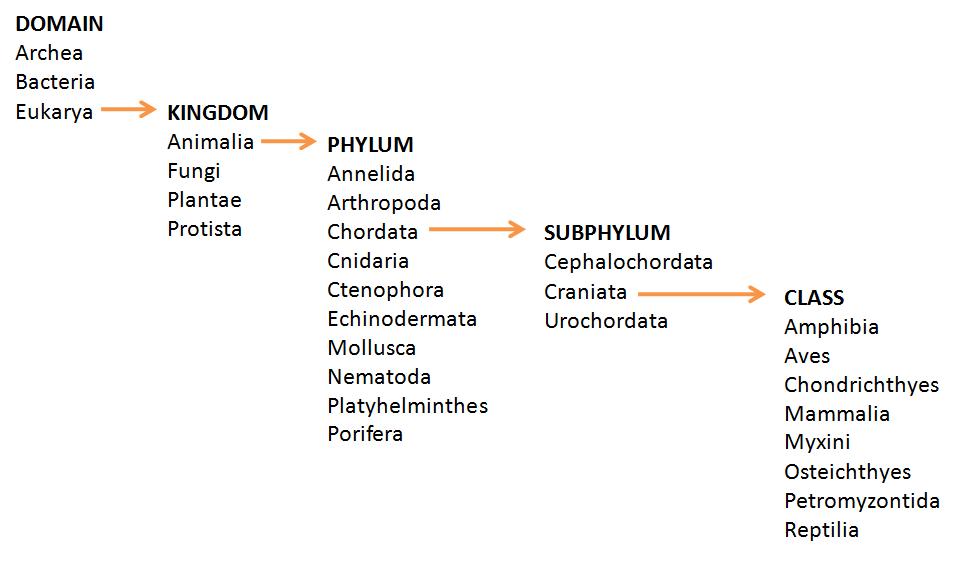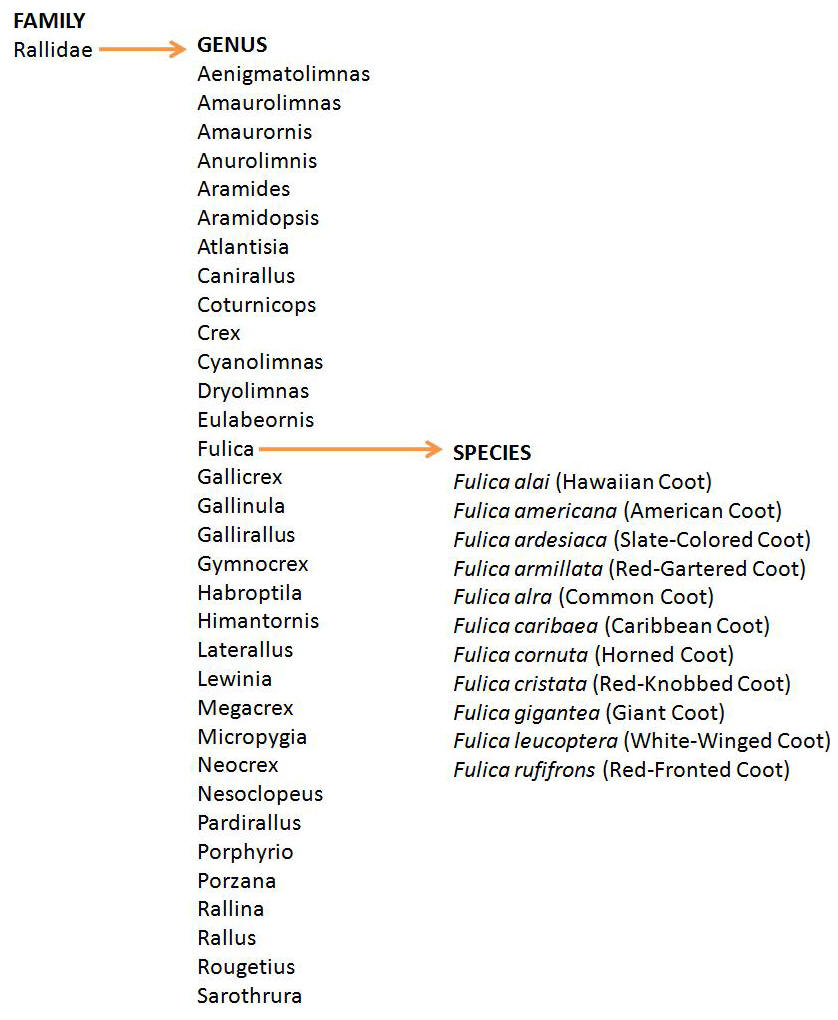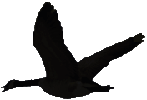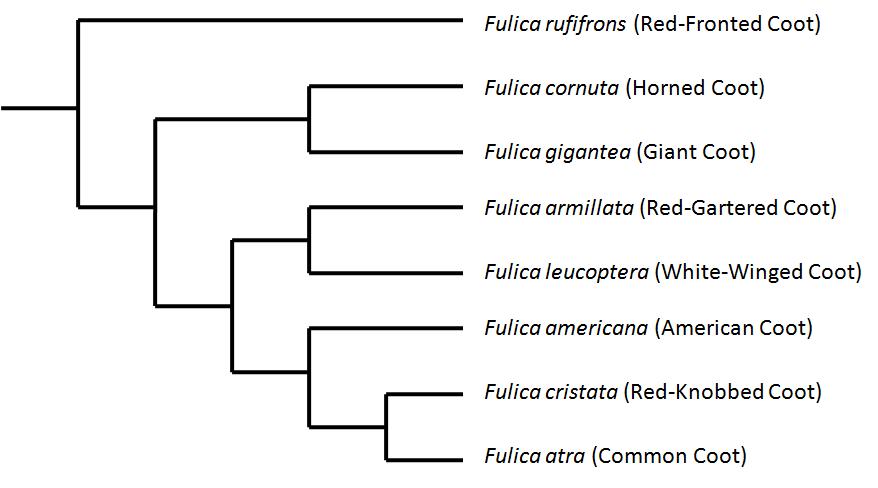Classification
Classifying organisms has been around for quite some time. It is beneficial to learn how organisms relate to one another. The American Coot's scientific name is Fulica americana. Shown below are several phylogenetic trees showing why the American Coot is grouped with other organisms and what other organisms it is most closely related to.
Note: The phylogenetic trees were created by myself (Caitlin Spohnholtz) and were not copied but rather created from researching how the American Coot fit in to each group. The pictures do not link to a phylogenetic tree somewhere else but if you would like to check out where I found my information to create my trees some of the classification headings are linked.
DOMAIN: Eukarya
The American Coot fits into this domain because it is made up of
eukaryotic cells, divides its cells by mitosis, has a variety of
cycles of reproduction and recombination, has a variety of modes of
access to energy and carbon, and is either unicellular, colonial, or
multicellular.
KINGDOM: Animalia
The American Coot fits into this kingdom because it is
multicellular, heterotrophic (does not make its own food), does not
have cell walls, is motile at some point during life, and acquires
its nutrients via ingestion.
PHYLUM: Chordata
The American Coot belongs in this phylum because it exhibits
bilateral symmetry, has a segmented body, has three germ layers, has
a coelom (fluid-filled cavity), has a complete digestive system, has
a tail projecting beyond the anus, has a ventral heart with a closed
circulatory system, has pharyngeal pouches present at some stage of
development, and has a dorsal nerve cord.
SUBPHYLUM: Craniata
The American Coot belongs in this subphylum because it has a true
cranium.

CLASS: Aves
The American Coot fits in this class because it possesses feathers,
a bill, a furcula (wish bone), fused bones in pelvis, feet, hands,
and head, has lightweight bones, no teeth, is endothermic, possesses
a four-chamber heart, produces large yoked, hard-shelled eggs, and
provides extensive care of the young until it is grown.
ORDER: Gruiformes
The American Coot belongs in this order because it has dark earth
tones (usually black, gray, or brown).

FAMILY: Rallidae
The American Coot fits in with this family because it is a small to
medium size bird, does not live in the desert, polar regions, or
alpine areas above the snow line, has short rounded wings, walks and
runs on strong legs, has a laterally compressed body, and do not
prefer flying.
GENUS: Fulica
The American Coot belongs in this genus because it is a medium
sized water bird, has a prominent frontal shield, has lobed toes, is
a weak flier, and is an omnivore.
Species: Fulica americana
The American Coot fits in here because it is found primarily in
North America and has a red tipped frontal shield that is unique
only to the American Coot.

The next phylogenetic tree shows the closest relatives of the American Coot. As you can see the American Coot shares a common ancestor with the Red-Knobbed Coot and the Common Coot that the other species of the genus Fulica do not share. This phylogenetic tree is based on the structure of bones, the muscle structure, and the organ system.
Click here to find out where the American Coot lives.

